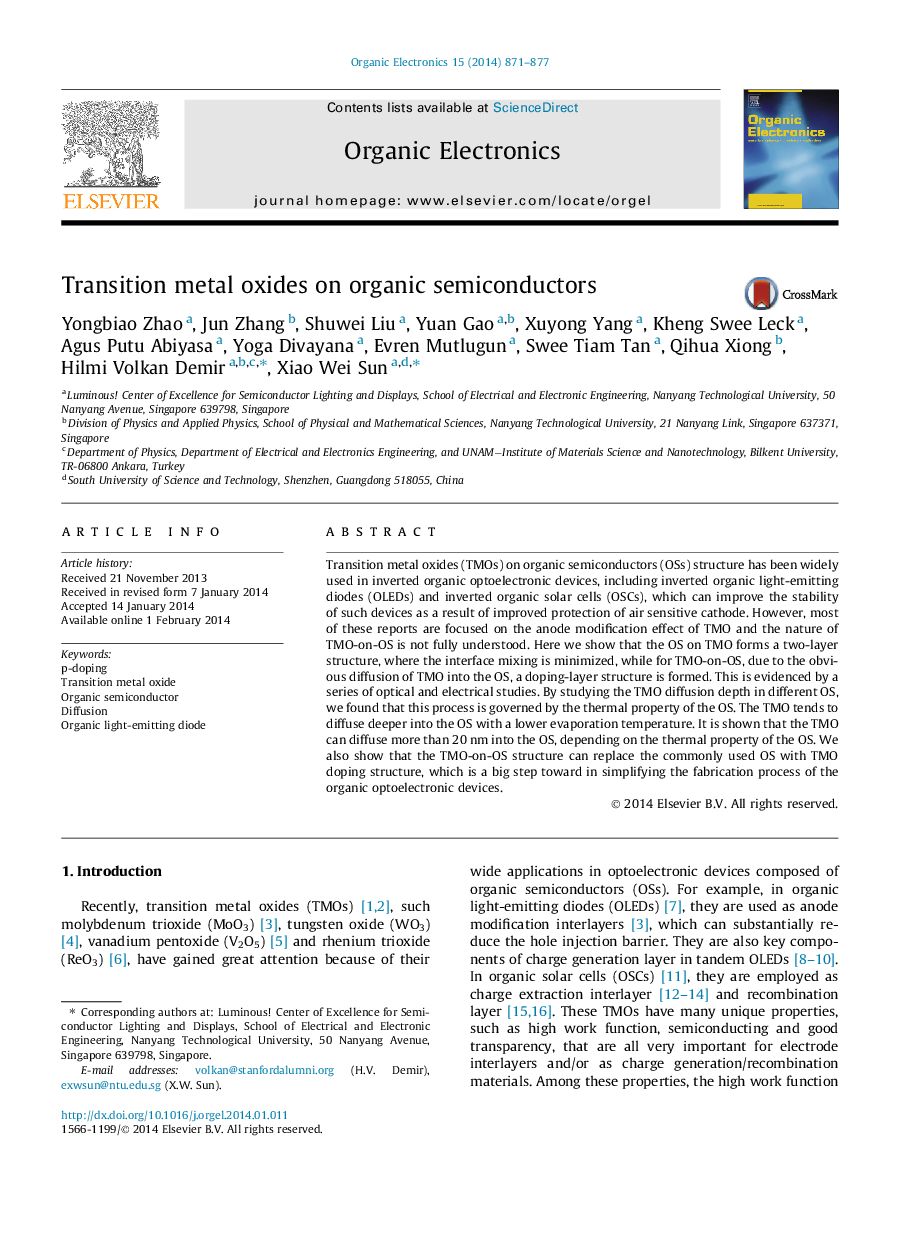| Article ID | Journal | Published Year | Pages | File Type |
|---|---|---|---|---|
| 1264431 | Organic Electronics | 2014 | 7 Pages |
•It is found when depositing transition metal oxide (TMO) onto organic semiconductor (OS), the TMO will diffuse into OS.•The diffusion depth of TMO into OS is dependent on the evaporation temperature of OS.•It is found the TMO-on-OS structure can replace commonly used TMO-doped OS structure.
Transition metal oxides (TMOs) on organic semiconductors (OSs) structure has been widely used in inverted organic optoelectronic devices, including inverted organic light-emitting diodes (OLEDs) and inverted organic solar cells (OSCs), which can improve the stability of such devices as a result of improved protection of air sensitive cathode. However, most of these reports are focused on the anode modification effect of TMO and the nature of TMO-on-OS is not fully understood. Here we show that the OS on TMO forms a two-layer structure, where the interface mixing is minimized, while for TMO-on-OS, due to the obvious diffusion of TMO into the OS, a doping-layer structure is formed. This is evidenced by a series of optical and electrical studies. By studying the TMO diffusion depth in different OS, we found that this process is governed by the thermal property of the OS. The TMO tends to diffuse deeper into the OS with a lower evaporation temperature. It is shown that the TMO can diffuse more than 20 nm into the OS, depending on the thermal property of the OS. We also show that the TMO-on-OS structure can replace the commonly used OS with TMO doping structure, which is a big step toward in simplifying the fabrication process of the organic optoelectronic devices.
Graphical abstractFigure optionsDownload full-size imageDownload as PowerPoint slide
